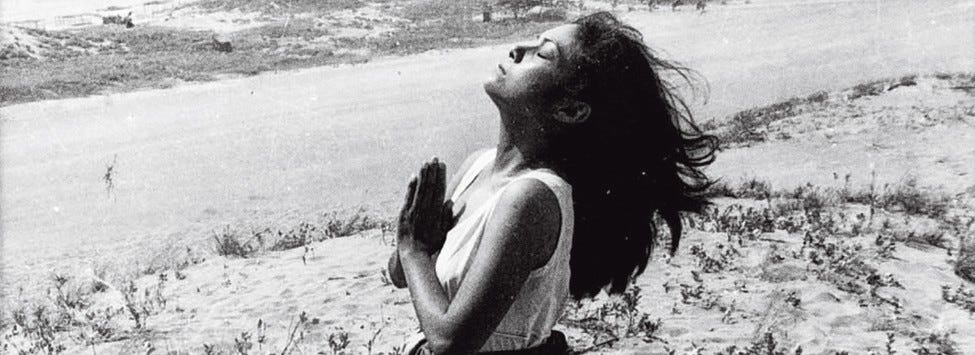Himala: A Classic Film on the Cult of Personality and Blind Fanaticism
Issue #12
[Author’s Note]
Hello fellow Filipiniana fans,
My weekend started early. I took Friday off because I was too unwell to come to the office and do anything productive. So I passed the time by ingesting lots of fluids, taking naps and just watching Netflix and YouTube. Although I knew it was just a flu and nothing more serious, I still didn’t quite like the feeling and hoped it would go away soon. Maybe I was subconsciously hoping for a miracle because for some reason, I thought rewatching Himala was a good idea.
My brain might have been foggy then but I can confirm now that it was a good idea.
Halina!
-Roi
[🎬 Film] Himala: A Film on the Cult of Personality and Blind Fanaticism
Himala is one of, if not the most iconic film in Philippine cinema. It is a powerhouse collaboration between three National Artists: Ishmael Bernal, Ricky Lee and Nora Aunor. In my opinion, it should be necessary viewing for anyone studying not just Philippine cinema, but Philippine culture and society more broadly.
Released in 1982 as an entry to the Metro Manila Film Festival, where it won most of the awards, including Best Film and Best Actress for Aunor, the film remains relevant today. Its portrayal of blind fanaticism and Filipinos’ obsession with Messianic figures still feels current.
The film revolves around Elsa, a local girl from a town called Cupang, who claims to have seen an apparition of the Virgin Mary during an eclipse. Word gets around and she soon starts faith healing. Her popularity spreads, drawing flocks to their small town, with people hoping to see her perform miracles.
Himala puts belief at the center of its story. It vividly captures an eerie type of folk Catholicism mixed with herd mentality. Viewers get a sense that devotion is presented not as a divine truth but as a flawed human construct. Faith is not questioned, because doing so risks destroying the social fabric. In Bernal’s Cupang, only outsiders and outcasts dare doubt miracles because in their town, miracles are less about the divine, but more about desperation.
In a town stricken by drought and poverty — believed to be the result of a curse given to them as punishment for driving away a leper years before — people are waiting for a miracle. To give them hope that things will change for the better. To save them from the punishing hellscape they are in. In Elsa, they found someone whom they can project their fears and hopes onto. Someone who can and must finally lift the town’s curse.
The story was inspired by real events that happened in Cabra Island in Lubang, Occidental Mindoro. Several schoolgirls allegedly saw apparitions of the Virgin Mary from the late 60s to early 70s. But that’s not the reason the film feels real and current even today. Its scathing criticism of Philippine society reflects a reality we are all too familiar with. The Philippines, like Cupang, always looks for saviors to idolize, miracles to believe and situations to take advantage of.
Also see our related posts on our socials (Instagram, TikTok).
In partnership with Una Casa
Una Casa is where art and story converge. “Made Here. Meant Everywhere.” affirms our vision of honoring art born of its place, carrying stories that belong everywhere.
Author’s note: we’re grateful to Una Casa for partnering with us to deliver this newsletter to your inbox. Their pure marble decor and gift pieces are the perfect wedding giveaways or custom souvenirs. Please do check out their IG page in case something is of interest. Feel free to let them know you learned about them from Halina Filipiniana — bonus perks not guaranteed ;)



